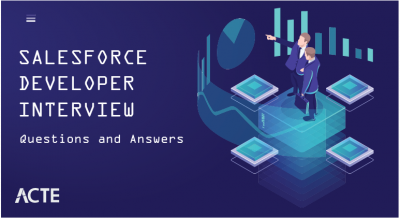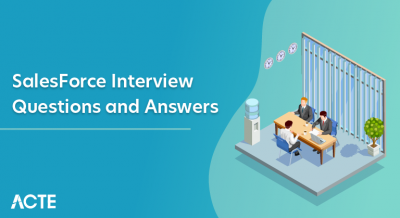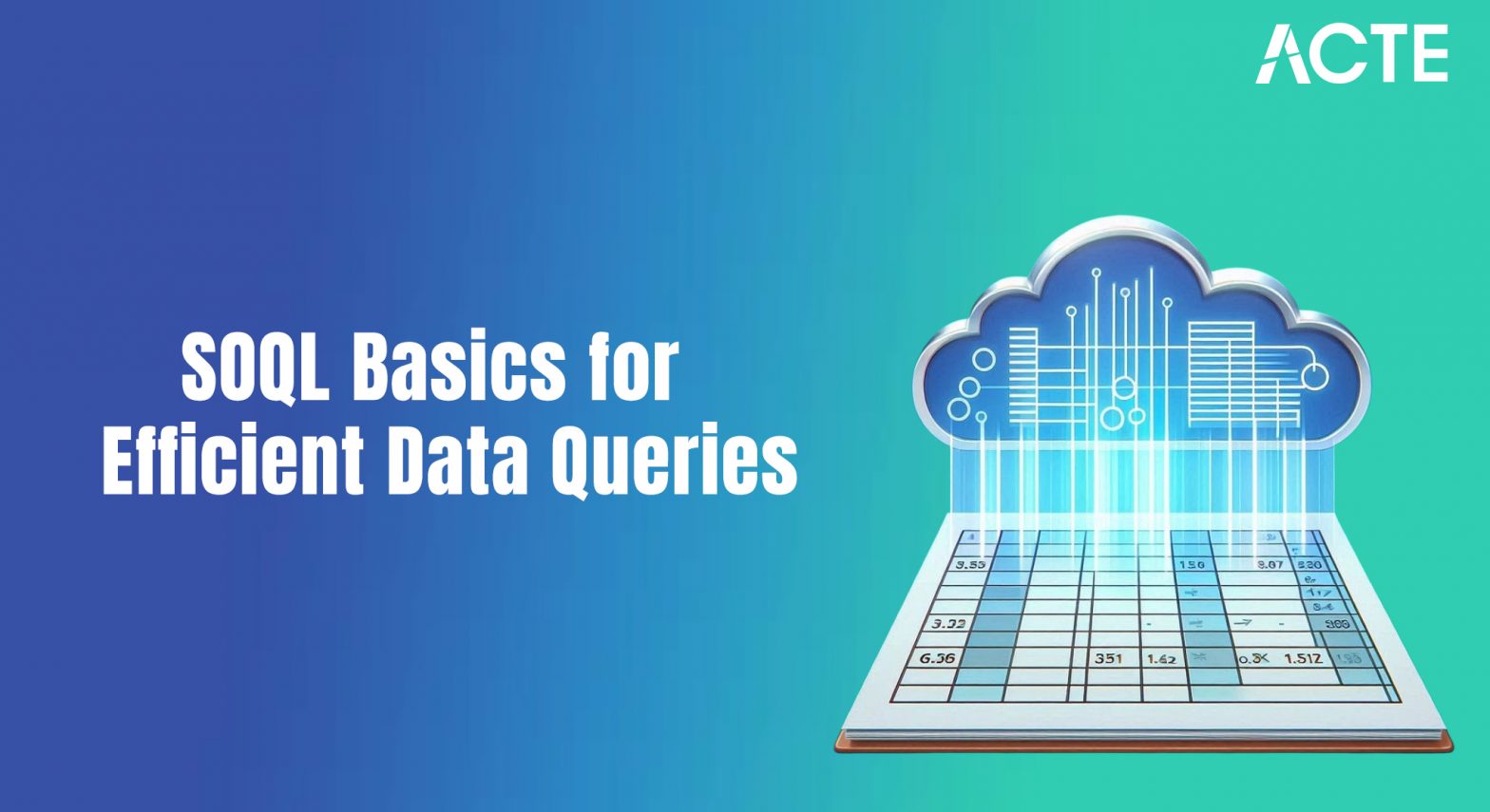
- Introduction to SOQL (Salesforce Object Query Language)
- Importance of SOQL in Salesforce
- SOQL Syntax and Structure
- SOQL vs SQL: Key Differences
- Querying Standard and Custom Objects
- Using WHERE Clause in SOQL
- Filtering and Sorting Results
- Aggregating Data with SOQL Functions
- SOQL Relationships and Joins
- Limit and Offset in SOQL Queries
- Best Practices for SOQL Optimization
- Common SOQL Use Cases
- Conclusion
Introduction to SOQL (Salesforce Object Query Language)
Salesforce Object Query Language (SOQL) is a powerful, purpose-built language designed specifically for querying data within the Salesforce platform. Unlike traditional SQL, which interacts with a wide range of databases, SOQL is uniquely tailored to retrieve data from Salesforce’s relational model, encompassing both standard and custom objects. It plays a vital role for developers and administrators, serving as the backbone for building reports, dashboards, automated workflows, and integrations with external systems. SOQL empowers users to write clear, efficient queries that precisely target the data required for their business needs. Closely integrated with Apex Salesforce’s proprietary programming language SOQL is also widely utilized in Visualforce pages and Lightning components to manage and display real-time data. Gaining a solid grasp of SOQL’s syntax, capabilities, and constraints is crucial for success in the Salesforce ecosystem. Those looking to deepen their expertise can benefit significantly from SalesForce Training which provides the essential knowledge needed to write high-performing queries, drive automation, and enhance application performance across the platform.
Importance of SOQL in Salesforce
SOQL is the backbone of data retrieval in Salesforce, empowering developers to extract targeted data from the platform’s database for tasks such as logic implementation, reporting, data migration, and application development. As a cloud based CRM, Salesforce relies on SOQL to efficiently handle large datasets distributed across numerous objects. Whether you’re building custom solutions with Apex, designing interactive pages using Lightning Components, or generating detailed analytics, SOQL remains indispensable. In scenarios involving asynchronous operations such as deferred processing or handling high volumes of data SOQL often works hand-in-hand with features like the Future Method in Salesforce which allows developers to manage long-running tasks more effectively. Without SOQL, precise and scalable data access in Salesforce would be nearly impossible.
Become a Salesforce expert by enrolling in this Salesforce Training Online Course today.
SOQL Syntax and Structure
SOQL syntax is designed to be easy to learn, especially for those familiar with SQL. The basic structure includes SELECT statements, FROM clauses, and optional WHERE, ORDER BY, and LIMIT clauses.
Basic SOQL Query Example:SELECT Name, Email FROM Contact WHERE LastName = ‘Smith’
Structure Breakdown:- SELECT: Defines the fields to retrieve.
- FROM: Specifies the object to query (e.g., Account, Contact).
- WHERE: Applies filters to narrow down results.
- ORDER BY: Sorts the result set.
- LIMIT: Restricts the number of records returned.
SOQL vs SQL: Key Differences
While SOQL and SQL share similar concepts, they differ significantly in application and capabilities:
| Feature | SOQL | SQL |
|---|---|---|
| Platform | Salesforce | Relational Databases (MySQL, PostgreSQL) |
| DML Support | No (only querying) | Yes (insert, update, delete)(MySQL, PostgreSQL) |
| Joins | Via nested queries | Via JOIN clauses |
| Aggregation | Limited (only some functions supported) | Extensive |
| Object Structure | Object-oriented | Table-oriented |
These distinctions are critical when transitioning from SQL to SOQL, ensuring that expectations are aligned with Salesforce’s query capabilities.
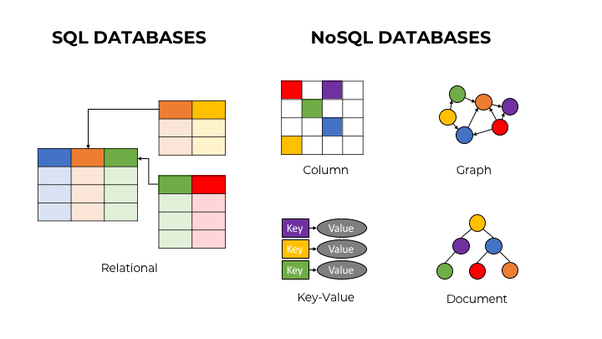
Querying Standard and Custom Objects
SOQL can query both standard and custom Salesforce objects. Custom objects are identified by the __c suffix.
Examples:- Querying a standard object: SELECT Name FROM Account
- Querying a custom object: SELECT Name__c FROM Invoice__c
When working with relationships between objects, you may also access parent or child records via dot notation or nested subqueries.
Using WHERE Clause in SOQL
The WHERE clause is used to filter records based on specific criteria. It supports operators such as =, !=, <, >, IN, LIKE, and logical connectors like AND, OR, and NOT.
Example:- SELECT FirstName
- LastName
- FROM Contact
- WHERE Email LIKE ‘%@example.com’
- AND CreatedDate > 2023-01-01T00:00:00Z
Filtering is crucial for optimizing performance and ensuring that only relevant data is retrieved.
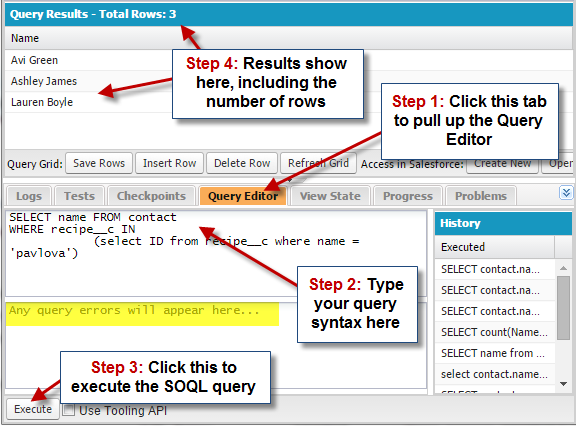
Filtering and Sorting Results
SOQL supports ORDER BY to sort the result set by one or more fields. Sorting can be ascending (ASC) or descending (DESC).
Example:- SELECT Name
- Industry
- FROM Account
- WHERE Industry != null
- ORDER BY Name ASC
Sorting helps structure the data presentation and improves readability and usability within applications and reports.
Are you getting ready for your Salesforce interview? Check out our blog on Salesforce Interview Questions and Answers!
Aggregating Data with SOQL Functions
Although SOQL doesn’t support as many aggregation functions as SQL, it still offers some vital aggregate functions:
- COUNT()
- COUNT(fieldName)
- SUM()
- AVG()
- MIN()
- MAX() Example:
- SELECT COUNT(Id)
- AVG(Amount)
- FROM Opportunity
- WHERE IsClosed = TRUE
- SELECT Name
- (SELECT LastName FROM Contacts)
- FROM Account
- SELECT FirstName
- Last Name
- Account Name
- FROM Contact
- SELECT Name
- FROM Account
- LIMIT 10
- SELECT Name
- FROM Account
- ORDER
- BY Name OFFSET 10
- Use Selective Filters: Avoid full object scans by using indexed fields.
- Retrieve Only Necessary Fields: Don’t use SELECT *-like behavior.
- Limit Records: Use LIMIT to minimize data volume.
- Avoid Nested Loops in Apex: Use Map or Set to store SOQL results.
- Use Query Plan Tool: Analyze query performance.
- Avoid Queries in Loops: Move SOQL queries outside of for loops in Apex.
- Custom Reports and Dashboards: Fetch specific metrics and data slices.
- Data Validation and Workflow: Retrieve related data for validations.
- Automation Scripts in Apex: Drive logic based on queried data.
- Data Migration and Integration: Query existing data for transfers.
- Lightning Components and Visualforce Pages: Populate UI with dynamic data.
Aggregations are often used in reports and dashboards to provide insights into data metrics.
SOQL Relationships and Joins
SOQL manages relationships using dot notation for parent-to-child queries and subqueries for child-to-parent-access an approach distinct from traditional SQL joins, as it relies on object relationships defined within Salesforce. To fully grasp these concepts and apply them effectively, professionals can benefit from Salesforce Training which provides in-depth guidance on navigating and leveraging Salesforce’s unique data architecture.
Parent-to-Child (Subquery):Understanding these relationship patterns is crucial for effective multi-object queries.
Limit and Offset in SOQL Queries
To control data volume and improve performance, SOQL supports LIMIT and OFFSET clauses:
LIMIT restricts the number of records returned:
OFFSET skips a number of records:
These are helpful in pagination and large data set management.
Best Practices for SOQL Optimization
Optimizing SOQL queries is essential for maintaining application performance and staying within Salesforce governor limits. Following best practices such as selective filtering, indexing, and limiting returned rows not only enhances query efficiency but also supports seamless integration with other automation tools like Types of Flows in Salesforce which play a key role in streamlining business processes across the platform.
Following these practices helps in adhering to Salesforce’s strict limits on query execution.
Thinking About Earning a Master’s Degree in Salesforce? Enroll For Salesforce Masters Program by Microsoft Today!
Common SOQL Use Cases
SOQL is used in a wide range of Salesforce applications:
From CRM automation to business analytics, SOQL plays a foundational role in empowering Salesforce functionalities.
Conclusion
Mastering Salesforce Object Query Language (SOQL) is essential for anyone working within the Salesforce ecosystem. It allows for the efficient retrieval and manipulation of data, making it a core skill for developers, administrators, and analysts alike. With a solid grasp of SOQL syntax, structure, and best practices, professionals can build optimized, high-impact solutions that meet evolving business needs. Learning how to query standard and custom objects, apply filters, manage relationships, and boost performance is key to unlocking the full capabilities of Salesforce’s data model. For those looking to deepen their expertise, Salesforce Training offers a structured path to mastering these critical skills, ensuring continued success as the platform grows and changes.



